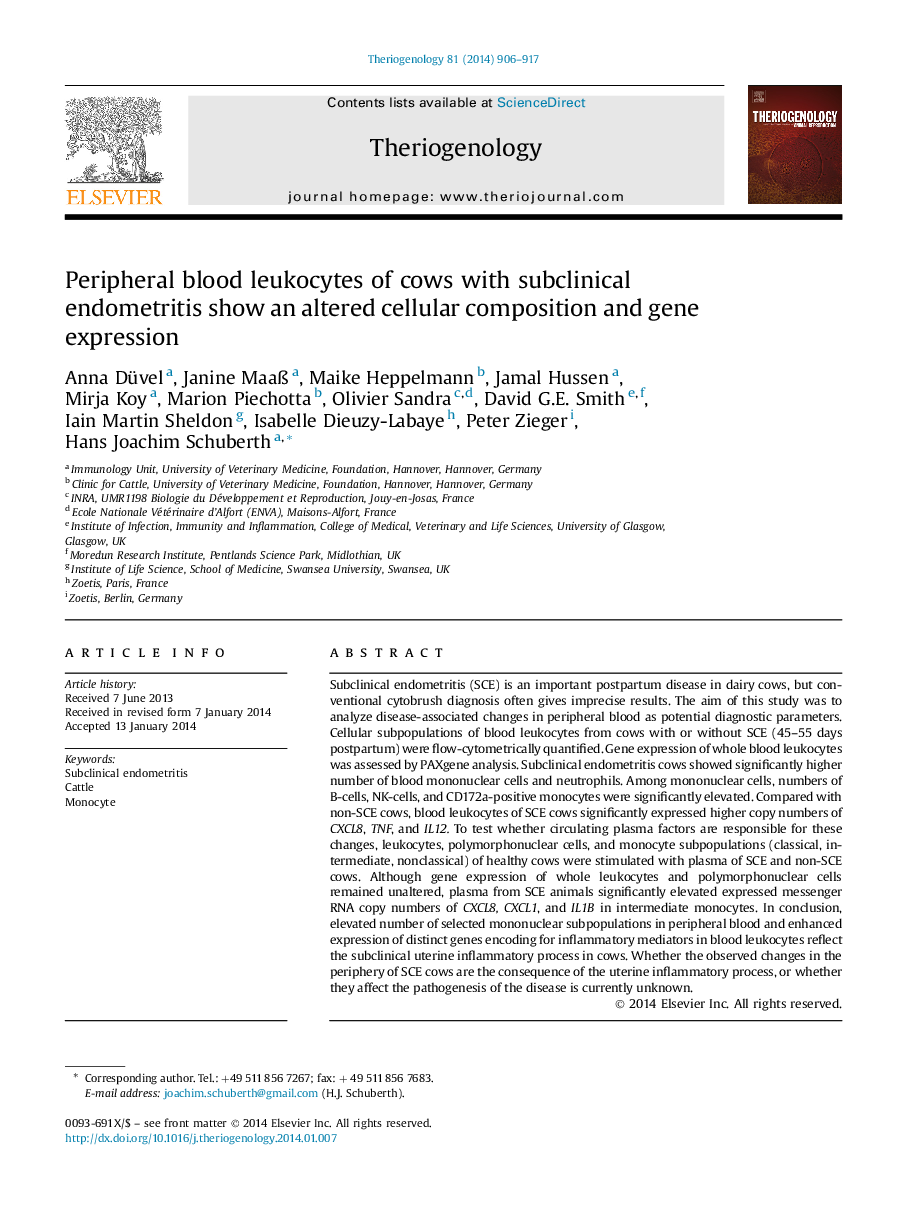| Article ID | Journal | Published Year | Pages | File Type |
|---|---|---|---|---|
| 2095141 | Theriogenology | 2014 | 12 Pages |
Subclinical endometritis (SCE) is an important postpartum disease in dairy cows, but conventional cytobrush diagnosis often gives imprecise results. The aim of this study was to analyze disease-associated changes in peripheral blood as potential diagnostic parameters. Cellular subpopulations of blood leukocytes from cows with or without SCE (45–55 days postpartum) were flow-cytometrically quantified. Gene expression of whole blood leukocytes was assessed by PAXgene analysis. Subclinical endometritis cows showed significantly higher number of blood mononuclear cells and neutrophils. Among mononuclear cells, numbers of B-cells, NK-cells, and CD172a-positive monocytes were significantly elevated. Compared with non-SCE cows, blood leukocytes of SCE cows significantly expressed higher copy numbers of CXCL8, TNF, and IL12. To test whether circulating plasma factors are responsible for these changes, leukocytes, polymorphonuclear cells, and monocyte subpopulations (classical, intermediate, nonclassical) of healthy cows were stimulated with plasma of SCE and non-SCE cows. Although gene expression of whole leukocytes and polymorphonuclear cells remained unaltered, plasma from SCE animals significantly elevated expressed messenger RNA copy numbers of CXCL8, CXCL1, and IL1B in intermediate monocytes. In conclusion, elevated number of selected mononuclear subpopulations in peripheral blood and enhanced expression of distinct genes encoding for inflammatory mediators in blood leukocytes reflect the subclinical uterine inflammatory process in cows. Whether the observed changes in the periphery of SCE cows are the consequence of the uterine inflammatory process, or whether they affect the pathogenesis of the disease is currently unknown.
